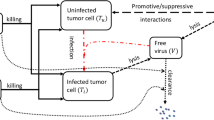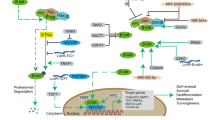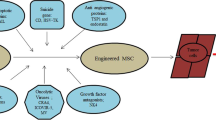Abstract
Cell-based therapy for cancer is a promising new field. Among cell types that can be used for this purpose, mesenchymal stem cells (MSCs) appear to hold great advantage for reasons including easier propagation in culture, possible genetic modification to express therapeutic proteins and preferential homing to sites of cancer growth upon in vivo transfer. The present study evaluated the potential of genetically modified MSC, constitutively expressing interferon (IFN)-β, in an immunocompetent mouse model of prostate cancer lung metastasis. A recombinant adeno-associated virus (rAAV) encoding mouse IFN-β was constructed and initially tested in vitro for high-level expression and bioactivity of the transgenic protein. MSCs were transduced by the rAAV-IFN-β or green fluorescent protein ex vivo and used as cellular vehicles to target lung metastasis of TRAMP-C2 prostate cancer cells in a therapy model. Cohorts of mice were killed on days 30 and 75 to determine the effect of therapy by measurement of tumor volume, histology, immunohistochemistry, enzyme-linked immunosorbent assay and flow cytometry. Results indicated a significant reduction in tumor volume in lungs following IFN-β-expressing MSC therapy. Immunohistochemistry of the lung demonstrated increased tumor cell apoptosis and decreased tumor cell proliferation and blood vessel counts. A significant increase in the natural kill cell activity was observed following IFN-β therapy correlating the antitumor effect. Systemic level of IFN-β was not significantly elevated from this targeted cell therapy. These data demonstrate the potential of MSC-based IFN-β therapy for prostate cancer lung metastasis.
This is a preview of subscription content, access via your institution
Access options
Subscribe to this journal
Receive 12 print issues and online access
$259.00 per year
only $21.58 per issue
Buy this article
- Purchase on Springer Link
- Instant access to full article PDF
Prices may be subject to local taxes which are calculated during checkout






Similar content being viewed by others
References
Jemal A, Siegel R, Ward E, Murray T, Xu J, Thun MJ . Cancer statistics. CA Cancer J Clin 2007; 57: 43–66.
Miller DC, Spencer BA, Ritchey J, Stewart AK, Dunn RL, Sandler HM et al. Treatment choice and quality of care for men with localized prostate cancer. Med Care 2007; 45: 401–409.
Webster WS, Small EJ, Rini BI, Kwon ED . Prostate cancer immunology: biology, therapeutics, and challenges. J Clin Oncol 2005; 23: 8262–8269.
Pestka S, Langer JA, Zoon KC, Samuel CE . Interferons and their actions. Annu Rev Biochem 1987; 56: 727–777.
Dong Z, Greene G, Pettaway C, Dinney CP, Eue I, Lu W et al. Suppression of angiogenesis, tumorigenicity, and metastasis by human prostate cancer cells engineered to produce interferon-β. Cancer Res 1999; 59: 872–879.
Qin XQ, Runkel L, Deck C, DeDios C, Barsoum J . Interferon-β induces S phase accumulation selectively in human transformed cells. J Interferon Cytokine Res 1997; 17: 355–367.
Lokshin A, Mayotte JE, Levitt ML . Mechanism of interferon β-induced squamous differentiation and programmed cell death in human non-small-cell lung cancer cell lines. J Natl Cancer Inst 1995; 87: 206–212.
Wong VL, Rieman DJ, Aronson L, Dalton BJ, Greig R, Anzano MA . Growth-inhibitory activity of interferon-β against human colorectal carcinoma cell lines. Int J Cancer 1989; 43: 526–530.
Einhorn S, Grander D . Why do so many cancer patients fail to respond to interferon therapy? J Interferon Cytokine Res 1996; 16: 275–281.
Salmon P, Le Cotonnec JY, Galazka A, Abdul-Ahad A, Darragh A . Pharmacokinetics and pharmacodynamics of recombinant human interferon-beta in healthy male volunteers. J Interferon Cytokine Res 1996; 16: 759–764.
Le PC, Genin P, Baines MG, Hiscott J . Interferon activation and innate immunity. Rev Immunogenet 2000; 2: 374–386.
Studeny M, Marini FC, Champlin RE, Zompetta C, Fidler IJ, Andreeff M . Bone marrow derived mesenchymal stem cells as vehicles for interferon-β; Delivery into Tumors. Cancer Res 2002; 62: 3603–3608.
Studeny M, Marini FC, Dembinski JL, Zompetta C, Cabreira-Hansen M, Bekele BN et al. Mesenchymal stem cells: potential precursors for tumor stroma and targeted-delivery vehicles for anticancer agents. J Natl Cancer Inst 2004; 96: 1593–1603.
Kassem M, Kristiansen M, Abdallah BM . Mesenchymal stem cells: cell biology and potential use in therapy. Basic Clin Pharmacol Toxicol 2004; 95: 209–214.
Pereboeva L, Curiel DT . Cellular vehicles for cancer gene therapy: current status and future potential. BioDrugs 2004; 18: 361–385.
Nakamizo A, Marini F, Amano T, Khan A, Studeny M, Gumin J et al. Human bone marrow-derived mesenchymal stem cells in the treatment of gliomas. Cancer Res 2005; 65: 3307–3318.
Mahmood A, Lu D, Wang L, Li Y, Lu M, Chopp M . Treatment of traumatic brain injury in female rats with intravenous administration of bone marrow stromal cells. Neurosurgery 2001; 49: 1196–1203.
Li Y, Chopp M, Chen J, Wang L, Gautam SC, Xu YX et al. Intrastriatal transplantation of bone marrow nonhematopoietic cells improves functional recovery after stroke in adult mice. J Cereb Blood Flow Metab 2000; 20: 1311–1319.
Korbling M, Estrov Z . Adult stem cells for tissue repair—a new therapeutic concept? N Engl J Med 2003; 349: 570–582.
Coussens LM, Werb Z . Inflammation and cancer. Nature 2002; 420: 860–867.
Bissell MJ, Radisky D . Putting tumors in context. Nat Rev Cancer 2001; 1: 46–54.
Ben-Baruch A . Host microenvironment in breast cancer development: inflammatory cells, cytokines and chemokines in breast cancer progression: reciprocal tumor-microenvironment interactions. Breast Cancer Res 2003; 5: 31–36.
Nauta AJ, Kruisselbrink AB, Lurvink E, Willemze R, Fibbe WE . Mesenchymal stem cells inhibit generation and function of both CD34+-derived and monocyte-derived dendritic cells. J Immunol 2006; 177: 2080–2087.
Ryan JM, Barry FP, Murphy JM, Mahon BP . Mesenchymal stem cells avoid allogeneic rejection. J Inflamm 2005; 2: 8–19.
Stoff-Khalili MA, Rivera AA, Mathis JM, Banerjee NS, Moon AS, Hess A et al. Mesenchymal stem cells as a vehicle for targeted delivery of CRAds to lung metastases of breast carcinoma. Breast Cancer Res Treat 2007; 105: 157–167.
Nakamura K, Ito Y, Kawano Y, Kurozumi K, Kobune M, Tsuda H et al. Antitumor effect of genetically engineered mesenchymal stem cells in a rat glioma model. Gene Therapy 2004; 11: 1155–1164.
Hung SC, Deng WP, Yang WK, Liu RS, Lee CC, Su TC et al. Mesenchymal stem cell targeting of microscopic tumors and tumor stroma development monitored by noninvasive in vivo positron emission tomography imaging. Clin Cancer Res 2005; 11: 7749–7756.
Komarova S, Kawakami Y, Stoff-Khalili MA, Curiel DT, Pereboeva L . Mesenchymal progenitor cells as cellular vehicles for delivery of oncolytic adenoviruses. Mol Cancer Ther 2006; 5: 755–766.
Zhang XY, La Russa VF, Bao L, Kolls J, Schwarzenberger P, Reiser J . Lentival vectors for sustained transgene expression in human bone marrow-derived stromal cells. Mol Ther 2002; 5: 555–565.
Karnoub AE, Dash AB, Vo AP, Sullivan A, Brooks MW, Bell GW et al. Mesenchymal stem cells within tumour stroma promote breast cancer metastasis. Nature 2007; 449: 557–563.
Kumar S, Mahendra G, Nagy TR, Ponnazhagan S . Osteogenic differentiation of recombinant adeno-associated virus 2-transduced murine mesenchymal stem cells and development of an immunocompetent mouse model for ex vivo osteoporosis gene therapy. Hum Gene Ther 2004; 15: 1197–1206.
Singh RK, Gutman M, Bucana CD, Sanchez R, Llansa N, Fidler IJ . Interferons α and β down-regulate the expression of basic fibroblast growth factor in human carcinomas. Proc Natl Acad Sci USA 1995; 92: 4562–4566.
Gohji K, Fidler IJ, Tsan R, Radinsky R, von Eschenbach AC, Tsuruo T et al. Human recombinant interferons-β and -γ decrease gelatinase production and invasion by human KG-2 renal-carcinoma cells. Int J Cancer 1994; 58: 380–384.
Sica G, Fabbroni L, Castagnetta L, Cacciatore M, Pavone-Macaluso M . Antiproliferative effect of interferons on human prostate carcinoma cell lines. Urol Res 1989; 17: 111–115.
Belhumeur P, Lanoix J, Blais Y, Forget D, Steyaert A, Skup D . Action of spontaneously produced β interferon in differentiation of embryonal carcinoma cells through an autoinduction mechanism. Mol Cell Biol 1993; 13: 2846–2857.
Johns TG, Mackay IR, Callister KA, Hertzog PJ, Devenish RJ, Linnane AW . Antiproliferative potencies of interferons on melanoma cell lines and xenografts: higher efficacy of interferon β. J Natl Cancer Inst 1992; 84: 1185–1190.
Albini A, Marchisone C, Del Grosso F, Benelli R, Masiello L, Tacchetti C et al. Inhibition of angiogenesis and vascular tumor growth by interferon-producing cells: a gene therapy approach. Am J Pathol 2000; 156: 1381–1393.
Gao J, Dennis JE, Muzic RF, Lundberg M, Caplan AI . The dynamic in vivo distribution of bone marrow-derived mesenchymal stem cells after infusion. Cells Tissues Organs 2001; 169: 12–20.
Grimm D, Kern A, Rittner K, Kleinschmidt JA . Novel tools for production and purification of recombinant adeno-associated virus vectors. Hum Gene Ther 1998; 9: 2745–2760.
Zolotukhin S, Byrne BJ, Mason E, Zolotukhin I, Potter M, Chesnut K et al. Recombinant adeno-associated virus purification using novel methods improves infectious titer and yield. Gene Therapy 1999; 6: 973–985.
Ponnazhagan S, Mahendra G, Kumar S, Shaw DR, Stockard CR, Grizzle WE et al. Adeno-associated virus 2-mediated antiangiogenic cancer gene therapy: long-term efficacy of a vector encoding angiostatin and endostatin over vectors encoding a single factor. Cancer Res 2004; 64: 1781–1787.
Kalajzcic I, Kalajzcic J, Hurley M, Licthler A, Rowe D . Stage specific inhibition of osteoblast lineage differentiation by FGF2 and Noggin. J Cell Biochem 2003; 88: 1168–1176.
Kumar S, Ponnazhagan S . Bone homing of mesenchymal stem cells by ectopic alpha4 integrin expression. FASEB J 2007; 21: 3917–3927.
Acknowledgements
Financial support from National Institutes of Health grants R01CA98817, R01AR50251 and the US Army Department of Defense grants BC044440 and PC050949 is gratefully acknowledged.
Author information
Authors and Affiliations
Corresponding author
Rights and permissions
About this article
Cite this article
Ren, C., Kumar, S., Chanda, D. et al. Cancer gene therapy using mesenchymal stem cells expressing interferon-β in a mouse prostate cancer lung metastasis model. Gene Ther 15, 1446–1453 (2008). https://doi.org/10.1038/gt.2008.101
Received:
Revised:
Accepted:
Published:
Issue Date:
DOI: https://doi.org/10.1038/gt.2008.101



